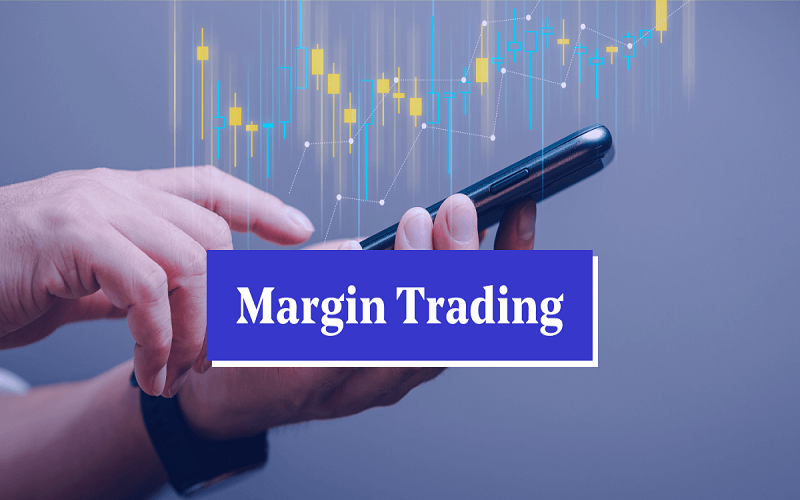Margin trading allows investors to buy more stocks than they would normally be able to afford by borrowing funds from a broker. This can amplify gains, but also increases risks. In this comprehensive blog, we explain everything you need to know about leveraging your investments in the market with margin trading account opening.
What is Margin Trading?
Margin trading involves borrowing money from an online broker to purchase investments. This allows you to buy more shares without needing to deposit the full amount upfront. However, you will be charged interest on the loaned amount.
How a Margin Account Works
A margin account allows investors to access loaned broker funds to execute trades. This can amplify potential gains but also exposes the investor to greater loss if the value of purchased securities declines significantly. If the margin maintenance requirements fall below the broker’s threshold, they can issue a “margin call” – requiring deposit of more funds.
Margin Trading Multiplies Gains…And Losses
The main benefit of margin trading is that it can multiply your investment gains when trades move in your favor. However, the major risk is that losses can also be amplified if the market moves against your position. Because your “leverage” is higher, both profits and losses are increased as a percentage of the total funds employed.
Meeting Margin Requirements
Brokers allow investors to borrow a portion of the total funds required when buying securities on margin – this portion is set by regulation. However, if the market value falls significantly, brokers require investors to deposit more funds to meet maintenance margin rules so leverage does not get too extreme.
Understanding Buying Power
Buying power refers to the total amount available to purchase investments in a margin account. This represents your own deposited cash as well as the maximum borrowing limit set by your broker. Having a higher buying power allows you to put on larger positions for a given cash balance.
Be Wary Of Over-Leveraging
While the idea of multiplying returns attracts many to margin trading, the higher loss potential means using excess leverage is very risky. Just because you have the buying power does not mean you should use all of it. Over-leveraging can lead to painful margin calls in volatile markets.
Use Stop Losses
More advanced traders use stop loss orders to help control risk when margin trading. Stop losses automatically close out positions once price crosses below a defined level. Locking in losses prevents account equity falling even further – crucial for leveraged positions.
Benefits Of Limited Margin Use
Utilizing margin safely can be advantageous to investors. Modest margin use allows buying more stocks to generate extra dollar amounts of profit. Margin profits can be withdrawn to repay debt unlike other borrowed cash. Limited leverage is less likely to trigger disruptive margin calls.
Consider Dollar Amount At Risk
Rather than focus solely on buying power, consider how much dollars are at risk in absolute terms when opening leveraged positions. This helps gauge if you are taking an appropriate amount of risk for your personal finances and profile.
Dangers Of Over-Leveraging
While margin can amplify percentage returns, over-leveraging is extremely dangerous. Even mild market corrections can wipe out equity. Sudden margin calls also force selling at the worst times. And amplified losses affect emotions which impairs judgement when trading.
Avoid Volatile Securities
Margin accounts allow trading volatile penny stocks or options. However, cheap stocks often have huge price swings. Losses can mount alarmingly fast if volatility turns against leveraged trades. Stick with more liquid blue chip names.
Monitor Positions Closely
Because leveraged investments carry greater downside risk, positions require constant monitoring. If prices start falling, investors may have to deposit more margin to maintain their buying power or meet margin calls. Watch for such signals.
Use Margin For Shorter Timeframes
The costs associated with margin trading make it more suitable for shorter timeframe investing. The interest expenses can rapidly accumulate if margin debt is held for months or years. Leverage is often utilized for trades lasting days or weeks instead.
How Much Can You Borrow?
Most brokers allow borrowing up to 50% of the purchase price when buying stocks on margin – this is set by regulatory limits. Some foreign markets and products allow more leverage. But higher leverage also brings greater risks – even 30% margin can be aggressive.
Margin Interest Costs Add Up
While borrowing to trade can amplify gains, the interest expenses take a bite from your profits – especially if held for months. Finance charges are typically around 8-10% per annum. This cost drag needs to be considered when trading on margin.
You Can Lose More Than Deposited
Unlike regular share investing, margin trading means you can lose more than your initial deposit if the market moves against leveraged positions sharply. This is because you are buying securities predominantly using borrowed funds rather than mostly your own cash.
Consider Overall Portfolio Risk
Even if margin trading seems attractive for specific opportunities, assess how it impacts your overall portfolio risk profile. Weigh up the potential for amplified gains versus the downside dangers before utilizing leverage.
Use Options Rather Than Margin
Some experienced investors prefer using options rather than margin loans when seeking to profit from short term share speculation. Options limit overall loss potential while providing leveraged upside. This circumvents issues like margin calls.
Margin Magnifies Emotions
When trading with mostly your own money, you tend to stay calmer when positions go against you. But seeing leveraged trades drop amplifies emotions like anxiety, frustration, fear and desperation – leading to panicked decisions.
Don’t Over-Commit Survival Capital
Investors should not risk 100% of their surplus savings when margin trading. Having a cash buffer to cover living costs for 6-12 months means you can ride out periods of portfolio decline or margin calls without emergency liquidation.
Monitor Charts More Often
Not only should leveraged trades be monitored daily, technical analysis conducted more frequently when margin trading flags signals suggesting a change of trend or momentum is afoot. Scrutinizing charts multiple times a day aids risk management.
Conclusion
While margin trading best platform to invest offers traders the advantage of higher buying power and thus amplified gains, considerable risks also accompany the use of leverage. Avoid over-extending margin use, employ stop losses, closely monitor positions, limit overall allocation to margin activity based on your risk tolerance, and firmly establish prudent leverage limits suited to your personal profile before borrowing to increase market exposure. Handled prudently, margin trading can provide savvy investors another avenue to potentially boost returns during favorable trading conditions. But uncontrolled use outside an investor’s true risk tolerance can prove extremely costly. Above all else, tread cautiously with margin use rather than get caught up in its return amplifying appeal alone without firmly accounting for the accompanying risks you face.



